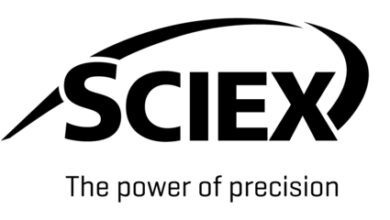1 No-Brainer Artificial Intelligence (AI) Stock to Buy With $200 and Hold for the Long Run

The artificial intelligence (AI) opportunity for investors is beginning to expand beyond the most popular names in the industry.
Investors might be familiar with artificial intelligence (AI) stocks like Nvidia and Microsoft. Nvidia designs the industry’s most powerful data center chips for developing AI models, and Microsoft is a leader on the software side thanks in part to its $10 billion investment in ChatGPT creator OpenAI.
But the AI opportunity is spreading like wildfire because companies of all sizes are now using the technology to enhance their existing businesses. Duolingo (DUOL -1.43%) is one of them. It operates the world’s largest digital language education platform, and it’s finding unique ways to apply AI to enhance the learning experience and reduce the workload on its employees.
Duolingo is generating incredible amounts of growth, yet it has barely scratched the surface of its addressable market. Here’s why investors who are sitting on idle cash (money they don’t need for immediate expenses) might want to put $200 toward one share of Duolingo.
Image source: Getty Images.
A leader in language education, now with AI
Technology is Duolingo’s secret sauce. It has pulled language education out of the classroom and placed it at the fingertips of its 97.6 million monthly active users anywhere, anytime via their smartphones. But it doesn’t stop there, because Duolingo’s gamified and interactive user experience ensures learners remain engaged with their lessons.
In fact, during the first quarter of 2024, 31.4 million of Duolingo’s monthly users signed in every single day, and that ratio (32%) was the highest in the platform’s history. The company also had a record-high 7.4 million paying subscribers during Q1, which was a 54% increase from the year-ago period.
AI is playing a growing role in converting the platform’s free users into paid users. Last year, Duolingo launched a new subscription tier called Max, which includes two generative AI features designed to accelerate the learning process. One of them is called Roleplay, which is an AI chatbot that helps the user practice their conversational skills in a language of their choice. The other feature is Explain My Answer, which gives each Max subscriber personalized feedback on their mistakes in each lesson.
Duolingo’s long-term goal is to deliver an educational experience equivalent to that of a private tutor, and AI is a substantial leap toward that target. The company has been developing its own models since 2013, but it also has a partnership with OpenAI that is accelerating its progress.
Duolingo is also using AI behind the scenes to craft lesson content, which allows employees to focus on more critical tasks. Plus, AI is applied extensively to the Duolingo English Test (DET), which is an accredited test used for things like university admissions. AI helps create, administer, grade, and even secure the DET, which enables the company to deliver results more quickly and keep costs down for each participant.
Duolingo just raised its revenue forecast for 2024
Duolingo generated $167.6 million in revenue during Q1, which was a 45% increase from the year-ago period, and above the high end of the company’s forecast ($167 million).
The strong result prompted management to increase its full-year guidance for 2024. It now expects to deliver a record-high $731 million in revenue (at the midpoint of the range) for the year compared to its previous forecast of $723.5 million.
Many U.S. companies have recently warned of a slowdown in consumer spending on the back of challenging economic conditions led by high interest rates, so Duolingo’s decision to raise investors’ expectations is very telling of the strength of its business.
But it gets better, because Duolingo managed to deliver a profit to accompany its strong revenue growth. The company reported $26.9 million in net income during Q1, which was a big positive swing from the $2.5 million net loss it posted in the year-ago period.
Duolingo also likes to focus on a non-GAAP profitability measure called adjusted earnings before interest, taxes, depreciation, and amortization (EBITDA), which strips out one-off and non-cash expenses like stock-based compensation. That metric came in at $44 million during Q1, which was a whopping 191% increase year over year.
Why Duolingo stock is a buy now
For all of Duolingo’s success to date, it has only scratched the surface of its opportunity. CEO Luis von Anh says the addressable market for language learning could be worth $115 billion in 2025, so based on the company’s revenue forecast for this year, it isn’t even capturing 1% of that right now. That means Duolingo could have a very long runway for growth.
Plus, the company has a unique business model that should insulate it if a slowdown in the broader economy does gather momentum. It previously told investors that 90% of its user acquisition is completely organic (in other words, it costs nothing), which is why it managed to grow so quickly despite only spending $19.9 million on marketing during Q1 (or just 12% of revenue).
Simply put, Duolingo has a solid product that does most of the heavy lifting when it comes to attracting users. Theoretically, the company could have doubled its marketing spending during Q1 and still generated a profit, which is like having an ace in the hole should the platform ever need to reignite growth. I know a few consumer technology companies that would be envious of Duolingo’s position.
As a result, not only is Duolingo a great buy for its incredible growth and its unique application of AI technologies, but the stock might also be a smart place to park some money if economic conditions deteriorate.
Anthony Di Pizio has no position in any of the stocks mentioned. The Motley Fool has positions in and recommends Duolingo, Microsoft, and Nvidia. The Motley Fool recommends the following options: long January 2026 $395 calls on Microsoft and short January 2026 $405 calls on Microsoft. The Motley Fool has a disclosure policy.


